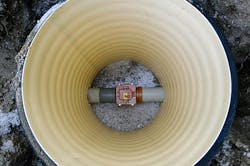Three Things to Know about OSHA’s New Rule for Confined Space Entry
If you think your construction workers might classify as confined space workers, you’d best be sure before sending them out on the job site. Otherwise, due to OSHA’s new rule, you could be in hot water. If there’s a confined space at work, make sure to follow the procedures set forth by OSHA.
Characteristics of Confined Spaces
According to OSHA, there are three characteristics of confined spaces:
- It is big enough for a person to fit his or her entire body.
- It is restrictive for the person when he or she is entering and exiting.
- The space is not meant for someone to stay in for a long period of time.
Requirements for Confined Spaces
As an employer on a construction site with a permit-required confined space, you must comply with various safety requirements. The list of must-haves at work includes:
- Danger and warning signs that alert workers about the permit-required confined space (PRCS).
- A program detailing the PRCS.
- Permits for safe entry operations, which also feature atmospheric test results.
- Certified documents detailing alternative entry procedures and safety methods for workers in the PRCS.
- A professional engineer’s written approval to ensure that employees know the provisions and limitations of using specifically designed personnel hoisting systems.
- Safety data sheets (or something along those lines) for workers who are exposed in the PRCS.
- Employee training records to confirm that they’ve completed confined space training requirements.
Training for the New OSHA Rule
The new rule went into effect on Aug. 3. How can you make sure that your workers are prepared for the associated hazards of confined space entry? You’ve already made the first move, to research about the new regulations. Now it is up to you to share this vital information with your workers. You also are responsible for setting up safe confined spaces at construction sites.
Additionally, you will need to provide a safety training course that meets OSHA requirements. Employees must be trained before they step foot on a job site.
All employees – including entry attendants, entry workers and emergency response personnel – must complete the training prior to performing any work-related task. You easily can find legitimate safety training courses including onsite, offsite and online safety training programs. For best results, choose the most convenient and effective option for your workers.
You also will need to consult with a safety training instructor. Search for instructors who are certified by OSHA, since they have the most up-to-date safety information regarding confined spaces.
About the author:

